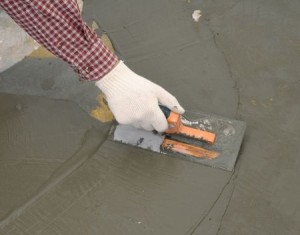Concrete is a versatile and durable building material, but it can be temperamental when it comes to extreme weather conditions. Whether you’re facing scorching heat in the summer or freezing temperatures in the winter, understanding how to handle concrete pouring is crucial to ensure the quality and longevity of your construction projects.
Hot Weather Concrete Pouring
Hot weather conditions can pose several challenges for concrete placement. Here are some essential tips to help you navigate the heat:
- Plan Ahead: Schedule concrete pours during cooler parts of the day, such as early morning or late afternoon, to avoid the peak heat.
- Use Shading: Erect temporary shading structures or use reflective blankets to shield freshly poured concrete from direct sunlight. This prevents rapid drying and surface cracking.
- Adjust Mix Design: Opt for a concrete mix with a lower water-cement ratio. This will reduce the risk of rapid setting and cracking in hot weather.
- Proper Curing: Begin curing immediately after finishing the concrete. Apply curing compounds or keep the surface continuously moist to prevent premature drying.
- Monitor Temperature: Keep an eye on the concrete temperature during mixing and placement. If it exceeds recommended limits, consider using chilled water or an admixture to lower the mix temperature.
- Avoid Overworking: Minimize excessive troweling and finishing as it can cause surface evaporation and weaken the concrete.
Cold Weather Concrete Pouring
Cold weather conditions can slow down concrete curing and affect its strength development. Here’s how to address concrete placement in the cold:
- Warm Materials: Store aggregates, water, and cement in heated areas before use to maintain a consistent mix temperature.
- Hot Water: Use warm water in the mix to counteract the effects of cold weather. However, avoid using water that is too hot, as it can accelerate setting.
- Insulate Forms: Insulate forms to retain heat and protect the concrete from freezing. You can use blankets, hay, or insulated concrete blankets.
- Accelerators: Add accelerators to the mix to speed up setting time in cold conditions. Calcium chloride is a common accelerator, but consult with experts to determine the appropriate dosage.
- Proper Curing: Curing is even more critical in cold weather. Maintain a consistent temperature (above 50°F or 10°C) and ensure the concrete remains moist for an extended period.
- Monitor Weather Forecasts: Keep an eye on the weather forecast to plan your concrete work during milder days whenever possible.
Concrete work in extreme weather conditions requires careful planning and execution to ensure the quality and durability of your construction projects. Whether you’re dealing with scorching heat or freezing cold, the key is to be prepared. By following these tips and consulting with concrete experts, you can successfully manage concrete pouring in hot summers and freezing winters. Remember that proper curing and the right mix design are essential elements in achieving strong, long-lasting concrete, regardless of the weather.
Contact Bergen Mobile Concrete at 201-797-7550 today or visit us online for more information on our concrete buggy delivery services for your next concrete project.


